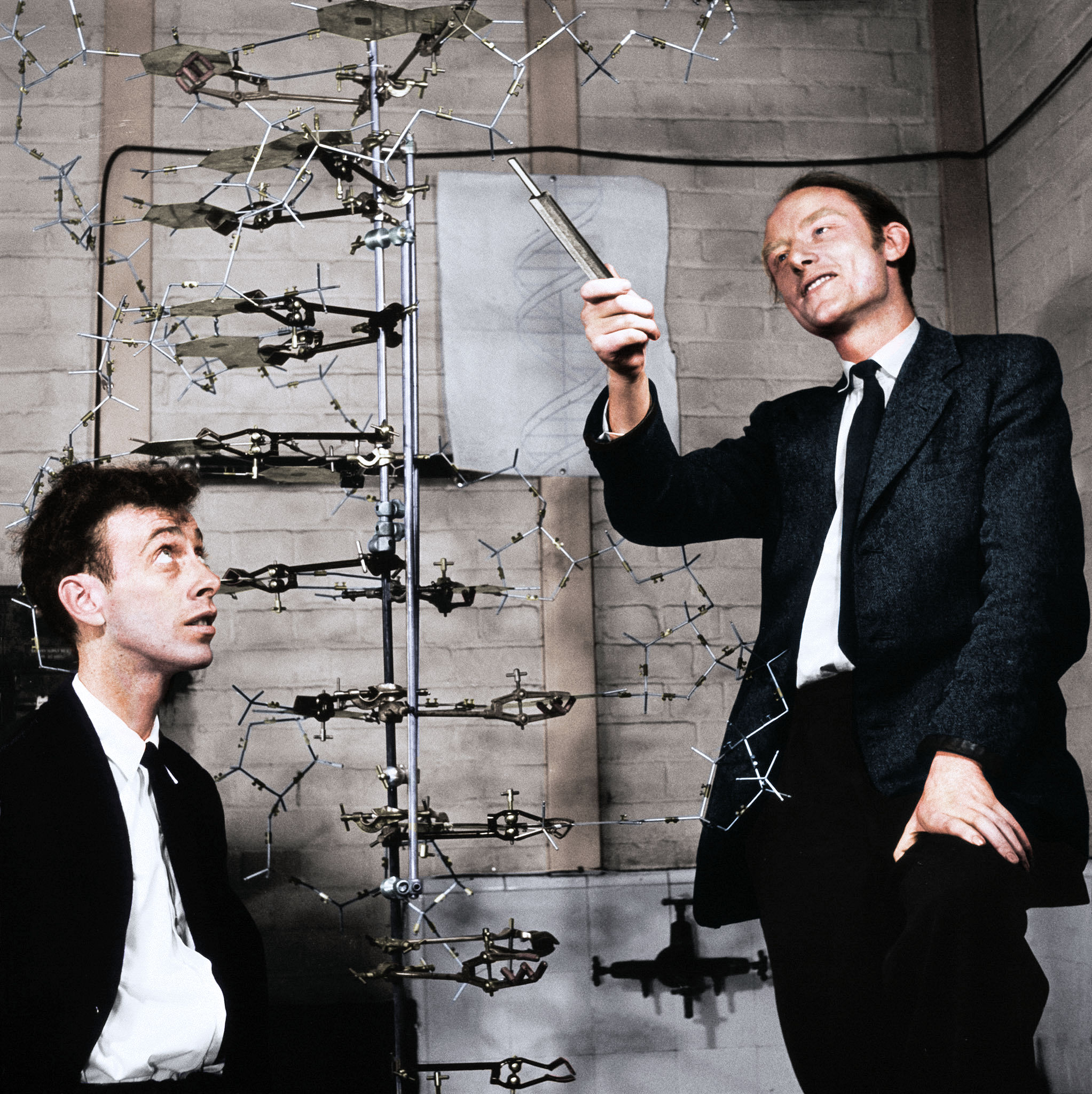Molecular biology is a discipline that has revolutionised our understanding of life at the most fundamental level. By investigating the interactions and processes that occur within biological molecules, molecular biologists have unveiled the intricate mechanisms governing the structure, function, and regulation of cells.
The field of molecular biology emerged in the mid-20th century as a multidisciplinary science that explores the biological phenomena at the molecular scale. It unites principles from genetics, biochemistry, and cell biology to decipher the blueprint of life encoded within the DNA, and how it directs the cell’s activities to maintain life and perpetuate genetic information. By investigating the interplay of biomolecules, molecular biologists have provided deep insights into the complex mechanisms that govern living organisms.
Historical Developments:
The historic foundation to molecular biology originated in the 1930s and 40s, making it a relatively new scientific field and arose from the convergence of work by geneticists, physicists, and structural chemists on a common problem: the nature of inheritance. Warren Weaver, director of the Division of Natural Sciences at the Rockefeller Foundation, coined the term “molecular biology” in 1938 in a report for the Foundation. Weaver and others encouraged research at the intersection of biology, chemistry and physics, while prominent physicists such as Niels Bohr and Erwin Schrödinger turned their attention to biology to explain the biochemical and biophysical basis of life. For Schroedinger, biology was to be reduced to the more fundamental principles of physics, while Max Delbrueck instead resisted such a reduction and sought what made biology unique. The former student of Thomas Morgan’s, Hermann J. Muller shift from Mendelian genetics to the study of gene structure raised the question of the relation between the gene concepts found in those separate fields of genetics. And the import of experimental methods from physics to biology raised the question of the relation between those disciplines. Also, during the period between 1930s to 40s, other emerging cross-disciplinary fields such as colloid chemistry, biophysics and radiation biology, crystallography, have aided the development of molecular biology as a field of it’s own right.
The formal foundations of molecular biology were laid with the discovery of the DNA double helix structure by Watson and Crick in 1953. This breakthrough unlocked the key to understanding how genetic information is stored and replicated. Subsequent advances in molecular biology, such as the elucidation of the genetic code and the discovery of DNA polymerases and RNA polymerases, paved the way for molecular genetics.
In the 1970s, the development of recombinant DNA technology, commonly known as genetic engineering, enabled scientists to manipulate and transfer genetic material between different organisms. This revolutionary technique has since had a profound impact on various fields, from agriculture to medicine.

The discoverers of the structure of DNA. James Watson (b.1928) at left and Francis Crick (b.1916), with their model of part of a DNA molecule in 1953. Crick and Watson met at the Cavendish Laboratory, Cambridge, in 1951. Their work on the structure of DNA was performed with a knowledge of Chargaff’s ratios of the bases in DNA and some access to the X-ray crystallography of Maurice Wilkins and Rosalind Franklin at King’s College London. Combining all of this work led to the deduction that DNA exists as a double helix. Crick, Watson and Wilkins shared the 1962 Nobel Prize for Physiology or Medicine, Franklin having died of cancer in 1958. Credit: A. Barrington Brown / Photo Researchers, Inc..
The Central Dogma of Molecular Biology: Decoding Life’s Blueprint
The Central Dogma of Molecular Biology is a foundational principle that underpins our understanding of the flow of genetic information within living organisms. Coined by Nobel laureate Francis Crick in 1958, the Central Dogma outlines the essential processes of DNA replication, transcription, and translation, shaping the way molecular biologists comprehend the intricacies of life. This essay delves into the significance ofthe Central Dogma, elucidating its core components and their crucial role in maintaining and propagating life.
The Central Dogma’s Components:
DNA Replication: DNA (deoxyribonucleic acid) is the hereditary material carrying genetic instructions that define an organism’s traits. Before cell division or reproduction, DNA must be faithfully copied to ensure the accurate transmission of genetic information to the next generation. DNA replication occurs during the cell cycle, involving the unwinding of the double helix and the synthesis of two identical daughter DNA strands, each complementary to one of the original parental strands.
Transcription: The process of transcription occurs in the cell nucleus, where the genetic information encoded in DNA is used to synthesize RNA (ribonucleic acid). RNA serves as a messenger, carrying the genetic code from the nucleus to the cytoplasm, where it participates in protein synthesis. During transcription, an enzyme called RNA polymerase reads the DNA template and synthesizes a complementary RNA strand, resulting in a messenger RNA (mRNA) molecule.
Translation: The final step of the Central Dogma is translation, which takes place in the cell’s cytoplasm. Translation involves converting the genetic code carried by mRNA into a functional protein. This process occurs at the ribosomes, where transfer RNA (tRNA) molecules bring specific amino acids to the ribosome based on the codons (three-nucleotide sequences) on the mRNA. The ribosome links these amino acids together, forming a polypeptide chain that folds into a functional protein.
The Significance of the Central Dogma: The Central Dogma represents a fundamental paradigm in molecular biology and serves as a guiding principle for understanding the molecular basis of life. It highlights the unidirectional flow of genetic information, with DNA acting as the stable repository of genetic instructions that is faithfully copied during cell division. This ensures the genetic continuity across generations, maintaining the genetic identity of organisms.
Additionally, the Central Dogma emphasizes the centrality of proteins as the key players in cellular functions. Proteins, synthesized through translation, carry out essential roles in catalyzing biochemical reactions, providing structural support, regulating gene expression, and facilitating communication within and between cells. Understanding the relationship between DNA, RNA, and proteins is vital for comprehending the molecular basis of diseases, cellular development, and evolutionary processes.
Expanding the Central Dogma: While the Central Dogma provided an initial framework for understanding genetic information, subsequent discoveries have expanded its scope. It has become evident that RNA can also play catalytic roles, acting as enzymes known as ribozymes. Moreover, some viruses can reverse the flow of genetic information through reverse transcription, converting RNA into DNA, challenging the strict unidirectionality originally described by the Central Dogma.
Key Concepts and Mechanisms:
Molecular biology investigates the essential biological processes, including DNA replication, transcription, and translation, that govern cellular activities. The central dogma of molecular biology, proposed by Francis Crick, describes the flow of genetic information from DNA to RNA to protein, with each step regulated by specific enzymes and factors.
The study of gene regulation is another crucial aspect of molecular biology. It involves the investigation of how cells control the expression of genes in response to internal and external signals. Understanding gene regulation has broad implications, as it underpins the development of multicellular organisms, cellular differentiation, and response to environmental cues.
Applications in Biotechnology:
The practical applications of molecular biology in biotechnology have been monumental. Genetic engineering has enabled the production of genetically modified organisms (GMOs) with enhanced traits, leading to increased crop yields, disease resistance, and improved nutritional content.
Additionally, the advent of molecular cloning techniques has facilitated the production of valuable therapeutic proteins, such as insulin and growth hormones, through the use of recombinant DNA technology. This has revolutionized medicine and led to the development of numerous biopharmaceuticals that have saved countless lives.
Medical Impact:
Molecular biology has transformed medical research and diagnosis. Techniques like the polymerase chain reaction (PCR) allow the amplification of specific DNA sequences, aiding in the detection of infectious agents, genetic disorders, and cancer markers. The identification of disease-causing mutations at the molecular level has empowered personalized medicine, enabling tailored treatments for individuals based on their genetic makeup.
Furthermore, advancements in genomics and proteomics have provided a deeper understanding of the genetic basis of diseases, leading to the discovery of potential therapeutic targets and the development of precision medicine approaches.
Conclusion:
Molecular biology has played a pivotal role in unlocking the secrets of life at the cellular level. Through the investigation of DNA, RNA, and proteins, molecular biologists have uncovered the mechanisms that govern biological processes and their regulation. This knowledge has not only broadened our understanding of life but also led to numerous practical applications in biotechnology and medicine. As technology continues to advance, molecular biology remains at the forefront of scientific discovery, promising a future of exciting breakthroughs and transformative impact on our society.

